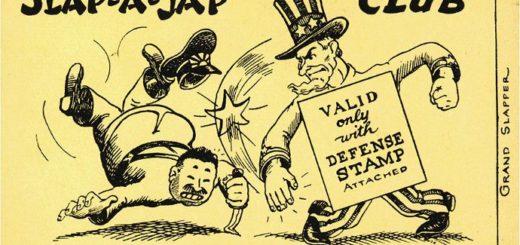BANKSTERS Causing Economic Collapse and Siphoning Money Out of Amerika (Worse Than the Nazi’s!)(Banksters=illuminati)
The world’s largest private banks have been caught in criminal acts that former bank fraud investigator Prof. William K. Black calls the greatest frauds in history. The litany of frauds involves more than a dozen felonies, including bid-rigging on municipal bond debt; colluding to rig interest rates on hundreds of trillions of dollars in mortgages, derivatives and other contracts; exposing investors to excessive risk; and engaging in multiple forms of mortgage fraud. According to US Attorney General Eric Holder, the guilty have gone unpunished because they are “too big to prosecute.” If they are too big to prosecute, they are too big to regulate.
The Libor scandal was a series of fraudulent actions connected to the Libor (London Interbank Offered Rate) and also the resulting investigation and reaction. The Libor is an average interest rate calculated through submissions of interest rates by major banks in London. The scandal arose when it was discovered that banks were falsely inflating or deflating their rates so as to profit from trades, or to give the impression that they were more creditworthy than they were.[3] Libor underpins approximately $350 trillion in derivatives. It is currently administered by NYSE Euronext, which took over running the Libor in January 2014.[4]
Currency trading “has become the fraud du jour” as of early 2008, according to Michael Dunn of the U.S. Commodity Futures Trading Commission.[1] But “the market has long been plagued by swindlers preying on the gullible,” according to The New York Times.[2] “The average individual foreign-exchange-trading victim loses about $15,000, according to CFTC records” according to The Wall Street Journal.[3] The North American Securities Administrators Association says that “off-exchange forex trading by retail investors is at best extremely risky, and at worst, outright fraud.”[4]
The foreign exchange market is at best a zero–sum game,[5] meaning that whatever one trader gains, another loses. However, brokerage commissions and other transaction costs are subtracted from the results of all traders, making foreign exchange a negative-sum game.
“In a typical case, investors may be promised tens of thousands of dollars in profits in just a few weeks or months, with an initial investment of only $5,000. Often, the investor’s money is never actually placed in the market through a legitimate dealer, but simply diverted – stolen – for the personal benefit of the con artists.”[6]
Chase Fraud: A federal judge has ruled that JPMorgan Chase must face a class action lawsuit that claims it defrauded New Jersey residents who applied for the Home Affordable Mortgage Program, a federal program designed to help homeowners in danger of defaulting on their homes.
Chase opted into HAMP through Fannie Mae shortly after the plan was implemented in 2009. The plan is designed to lower homeowners’ monthly mortgage payments to sustainable levels, but New Jersey homeowners say they never got the benefits of the program. Instead, they say, Chase took the federal money designed to bail out homeowners and systematically rejected HAMP applications based on false claims that homeowners did not provide the appropriate documentation, even though many homeowners claim they did.
Bankster Greed Leading to Ruin of America
Lost amid the hoopla over JP Morgan Chase’s record-setting $13 billion settlement this fall was news of another monster court resolution – a $2.46 billion judgment, the largest ever awarded after trial in a securities fraud class action case, handed down in October against a HSBC acquisition called Household International.
It’s an old case, with the trial completed way back in 2009 and the fraud in question having all taken place between 1997 and 2002. But it has crucial ramifications for the present, for one key reason:
The evidence uncovered in the Household suit should put to lie once and for all the oft-repeated myth – spread by many of America’s most notable dumb people, from Rush Limbaugh to New York City Mayor-unelect Mike Bloomberg – that the financial crisis was caused by the government “forcing” banks to lend to poor people.
In reality, of course, the subprime bubble exploded because financial companies and banks were in a mad rush to get as many iffy borrowers into loans as quickly as possible – and not because they were forced to, but because they made assloads of money doing so.
Nowhere was that more in evidence than in this case, Lawrence E. Jaffe Pension Plan v. Household International, Inc., et al., where a major trafficker in subprime and “alternative” mortgage products schemed in every conceivable way to get low-income, high-risk borrowers into as many dangerous mortgages and refinance deals as they could.
Thankfully, the principals in this case left behind a treasure trove of amazingly disgusting videos and internal memoranda showing in graphic detail an elaborate, company-wide plan to herd unsuspecting high-risk borrowers into bad loans. We can share some of that evidence here, with particular emphasis on the firm’s “training videos,” and I can pretty much guarantee that some readers may actually vomit with rage when they watch them.
Some background: The suit against Household International, a major home-loan purveyor that earned $75 billion from loan securitizations in 1999-2002 (and which was swallowed up by HSBC in 2002) originally began as a stock fraud case. Among other things, Household was disguising the toxicity and instability of its loans using a wide assortment of improper accounting schemes, which in an Enronesque touch were used to argue to the markets and to potential stockholders that Household was putting up record sales numbers.
These accounting tricks included a preposterous technique called ‘re-aging,’ in which company bean-counters would declare delinquent loans to be no longer delinquent, by magically resetting the clock on the borrower’s payment history under certain conditions (thereby ‘re-aging’ the delinquency).
Using this and other sordid bookmaking techniques, they could then claim that they had more well-performing loans than they really did. This tricked shareholders into believing that the company’s loan portfolio was stronger than it was.
Way back in 2002, numerous major investors in Household, including several pension funds, sued the company for violations of securities laws. The plaintiffs back then could have had no idea they would spend 11 years in court, and that their case would end up uncovering evidence of behavior that would play a key role in inflating a worldwide speculative bubble in the mid-2000s, and crashing the U.S. economy in 2008.
A Chicago jury ruled against the firm in May 2009, and the award was announced a little over six weeks ago this year. It got a little press attention, but a lot of the most damning evidence hasn’t made it into the media, and some of it is stuff that really needs to be seen to be believed.
Just to give one example, Household had a particularly disgusting scam going – they called it the “EZ Pay Plan.”
In it, customers were urged to junk their old (and presumably safe) mortgages and switch to a new Household Refinance plan that would be both more expensive and more dangerous, using a little sleight of hand. Among other things, they told customers they could save money and reduce their interest rate by switching from a monthly payment plan to a biweekly payment plan.
There were two things going on here. One – and this is so sleazy it’s almost funny – by getting customers to make payments biweekly instead of monthly, they would essentially box borrowers into making an extra payment every year (remember, there are 52 weeks in a year).
The other is that the company was using word games to try to tell people they would be paying lower rates, when in fact they would not be.
Typically what that involved was getting them into loans that not only demanded more payments every year, but also paid off much earlier (say, in 18 years instead of 30), forcing the borrower to come up with a lot more money a lot sooner. Naturally, because the customer is paying off his or her loan faster, he or she ends up paying less interest overall.
But the Household pitch would be to describe this as a loan that, because you’re paying less interest overall, was “like” paying a lower interest rate on a long-term loan, when in fact the customer usually ended up paying a shorter loan at a far higher rate. As predatory schemes go, it’s a pretty slick pitch.
“It’s actually sort of ingenious. I wouldn’t have thought of it,” says Dan Drosman of the San Diego-based Robbins Geller Rudman & Dowd, the firm that served as lead counsel for the plaintiffs for the last 11 years.
Household scammed customers in many different ways. They concealed prepayment penalties, offered phony “discount points,” and used a variety of techniques to increase the amount of money borrowed against customers’ homes. The latter mechanism had the effect of lowering the equity people had in their houses, making it difficult and in some cases impossible for people to refinance with other companies once they realized that they’d stepped into a deadly trap with Household (literally so: Household called their sales pitch the “trap sale”).
All of which brings us to a remarkable series of training videos. The following set of clips was put together way back in 2001 by one of the executives of Household, a creature named Dennis Hueman. In it, this hollow-eyed, suburban-Skeletor-looking sales-creep talks about how to snare people into falling for Household’s dirty loan schemes.
In this first clip, Hueman, who was in charge of the entire Southwest division of Household, tries to get his sales staff in the selling mood by telling them a folksy story. He compares the process of getting customers locked into predatory deals like the EZ Pay “bimonthly payment” scam to fishing, telling a story about going lake fishing with his seven-year-old.
His son, he says, dutifully casts his reel out into the water and lets the bobber float, waiting for a bite. But then, about a minute into this clip, Hueman describes his son yanking the rod back fiercely – “he thought he was on Field and Stream” – as soon as he sees the bobber move.
Of course, when the overanxious boy reels the line in, the hook is empty and even his bait has been washed away. Punchline: Hueman’s son is a crappy salesman!
Father Hueman sagely explains: when fishing, it’s much better to be patient:
Now, good fisherpeople know, if you’re gonna go out and fish, you’ve gotta take and put the bait on your hook, and you’ve got to cast it out there. Now that bobber’s going to go down once. When it goes down once, you say, I’m just fine with that, I’m going to be patient . . . You wait until the bobber goes all the way under, all the way under, and the line is nice and firm, and that fisher-person will take and bring in that fish.
Watch at around the 1:45 mark:
Look back also at around 2:15 of that same clip. There, Hueman explains that there’s even a little sadistic pleasure that may be had in reeling a fish in, if you’re patient enough.
When you take your time and make sure the fish is all the way on the hook, Hueman says, you can play around with your catch on the way back to the boat:
Don’t have to worry. You can even play around with it a little bit. I’ve seen people, they have their catch on, they even prolong it. They have some fun with it.
Hueman will go on in these videos to explain exactly what language to use to get people to agree to sign on to loans that are actually more expensive and more dangerous than the ones they already have, something no rational customer would do if he or she were actually getting the straight story.
Why is this deception necessary? Hueman himself explains it in this next video.
In it, he compares the sales pitches of his company to those of a fictional competitor, “Billy Bob Brokerage Firm.” He explains that Billy Bob’s salesmen are going to snare their catch by talking about lower rates.
But at the very end of this clip, at about the 3:11 mark, Hueman explains why Household can’t use the same pitch as Billy Bob’s company. Why? Because Billy Bob’s rates are actually lower than Household’s:
I’ll be quite honest with you, folks. I think our pitches sound exactly like the pitches that are happening over at Billy Bob’s shop. The only difference is, we’re selling an 11 percent rate, and Billy Bob is selling an 8 percent rate. So if our pitch is exactly the same . . . . I don’t think we’re going to win a whole lot.
Here, watch for yourself:
So given that Household couldn’t sell their wares by honestly comparing rates with the competition, they had to come up with another, less direct way to reel in those fish. That leads us to the last video, where Hueman lays out the technique he calls the “trap sale.” He introduces that term just 15 seconds into this video:
He goes on to role play a “trap sale” with another person. Here’s how it works. He begins by simply asking the customer a question: On your first mortgage, with Countrywide, what was the interest rate? (The “customer” says it was eight percent.) And was that a 30-year fixed mortgage? (The “customer” nods bashfully.)
Hueman then winces, like he’s smelling rotting cheese, at the news that the poor customer is paying 8 percent over 30 years. He asks, in mock-amazement: You’re paying 8 percent over 30 years? Really? And the customer says yes once again. Now Hueman switches to his pitch (watch from 4:05 on):
Let me ask you a question on your Countrywide mortgage. If your mortgage company, Countrywide, were to take and lower that down to 2.37 percent for you, if they were to take it and lower it down to 2 or 3 percent fixed, no gimmicks . . . would you take it?
The customer says yes. Hueman then explains to the “customer” that Household has a product that would make that big bad interest problem go away (watch from about 5:05 on):
We have a product here, it’s a non-standard loan product, and what that means is that I can show you how to repay that debt so that it would pay out cheaper than a 2.5 percent fixed 30-year mortgage . . .
See the semantic trick? Hueman offers a hypothetical scenario (If Countrywide were to offer you . . . would you be interested?) that makes the customer think he’s getting offered a lower 30-year fixed rate. Hueman then offers a “non-standard loan product” that would “pay out cheaper than a 2.5 percent fixed 30-year mortgage,” by which he means there’s less total interest than such a mortgage.
But he’s not actually offering a lower interest rate. He’s tricking the customer into taking a shorter loan where he’d pay more cash upfront. And then he’s enjoying reeling his catch in.
There’s lots more damning evidence in the case.
The firm also hired as a consultant a legendary credit-industry villain named Andrew Kahr. Kahr briefly became infamous for practices at a credit card giant named Providian thanks to a lawsuit filed over a decade ago against that company, in which all sorts of damning statements were uncovered. Among other things, Kahr wrote in an internal memo that in the credit card business, the “problem is to squeeze out enough revenue and get customers to sit still for the squeeze.”
As a consultant for this home-lending company Household, Kahr wrote a series of memos with suggestions for various practices, including the bi-monthly plan. Later, the firm attempted (with some success) to delete these memos prior to litigation, but some of them survived and they’re revolting.
Just as he had at Providian, Kahr stressed getting people into loans and then keeping them in those loans – “sitting still” if you were – for as long as possible. Among other things, he talked about imposing frightening prepayment penalties that would be high enough to keep people on the rolls. “Six months’ interest is not enough to discourage prepays in all circumstances,” he wrote. “Even 12 months might not be [enough].”
“So we can target prepayments approximately equal to zero as a goal,” he added. “We should certainly aim at forestalling all prepays – and getting mortgage brokers including ex-employees off our backs.”
In the same memo, Kahr talks about imposing late fees at the highest allowable levels, and notes cheerfully that if the deals are struck correctly, customers are often clueless about the size of the penalties they’d agreed to pay in the event of lateness. “In recent years, late fees in credit cards have doubled, in some cases tripled,” he writes. “It has turned out that customers are not sensitive to these fees, either in accepting the loan or when they incur the fees.”
Not many rational people these days will deny that predatory lending goes on. But there are still a great many people who refuse to see subprime mortgage customers as victims in the crash drama.
Despite reams of anecdotal evidence that banks and finance companies schemed incessantly to get people into dicey alternative loans – loans that became the fodder for securities that would then be sold to another set of victims, the investors in mortgage-backed bonds – many refuse to believe that people who defaulted on their home loans or went into foreclosure weren’t themselves at fault somehow. The underlying instinct is to blame people for not being rich enough to pay off their lenders.
But cases like Household underscore the fact that many subprime borrowers were led straight into the debt buzz-saw by companies that were actively trying to “squeeze” every last bit of revenue out of their clients. There were people who qualified for prime loans who got nudged into more lucrative alternative loans, and people who had simple 30-year fixed mortgages who found themselves frantically trying to pay off unforeseen penalties that had intentionally been hidden from them during the sales process.
The people who sold these products reside very near the apex of human assholedom, and there were quite a lot of them, which unfortunately led to a worldwide financial crash. On what passes for the bright side, many of them were stupid enough to leave behind records of their sleazy practices for history. So hopefully, at least, there won’t be any more illusions about what went on.
Read more: http://www.rollingstone.com/politics/news/lurid-subprime-scams-unveiled-in-long-running-fraud-trial-20131212#ixzz3pF7eW8ex
Follow us: @rollingstone on Twitter | RollingStone on Facebook
















